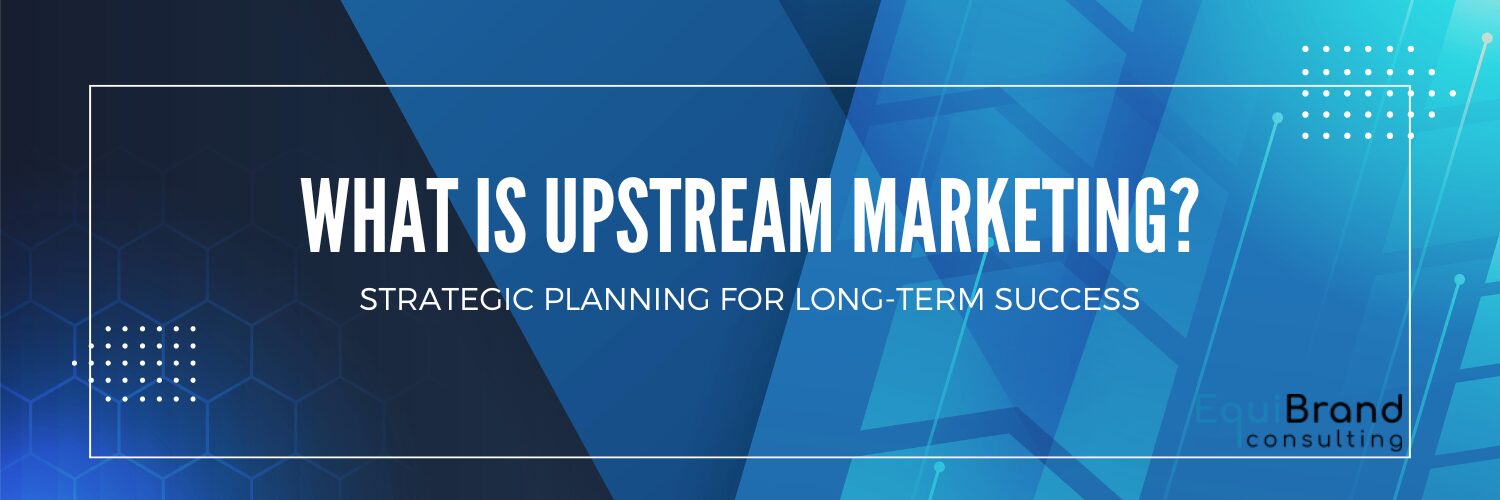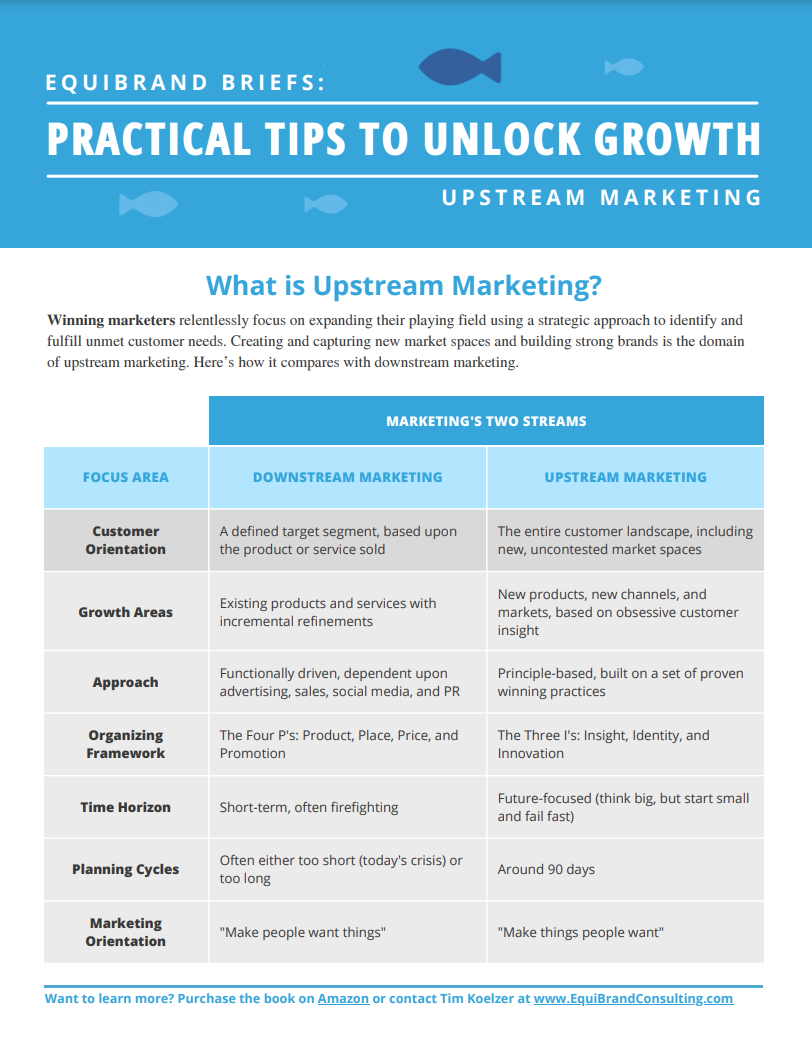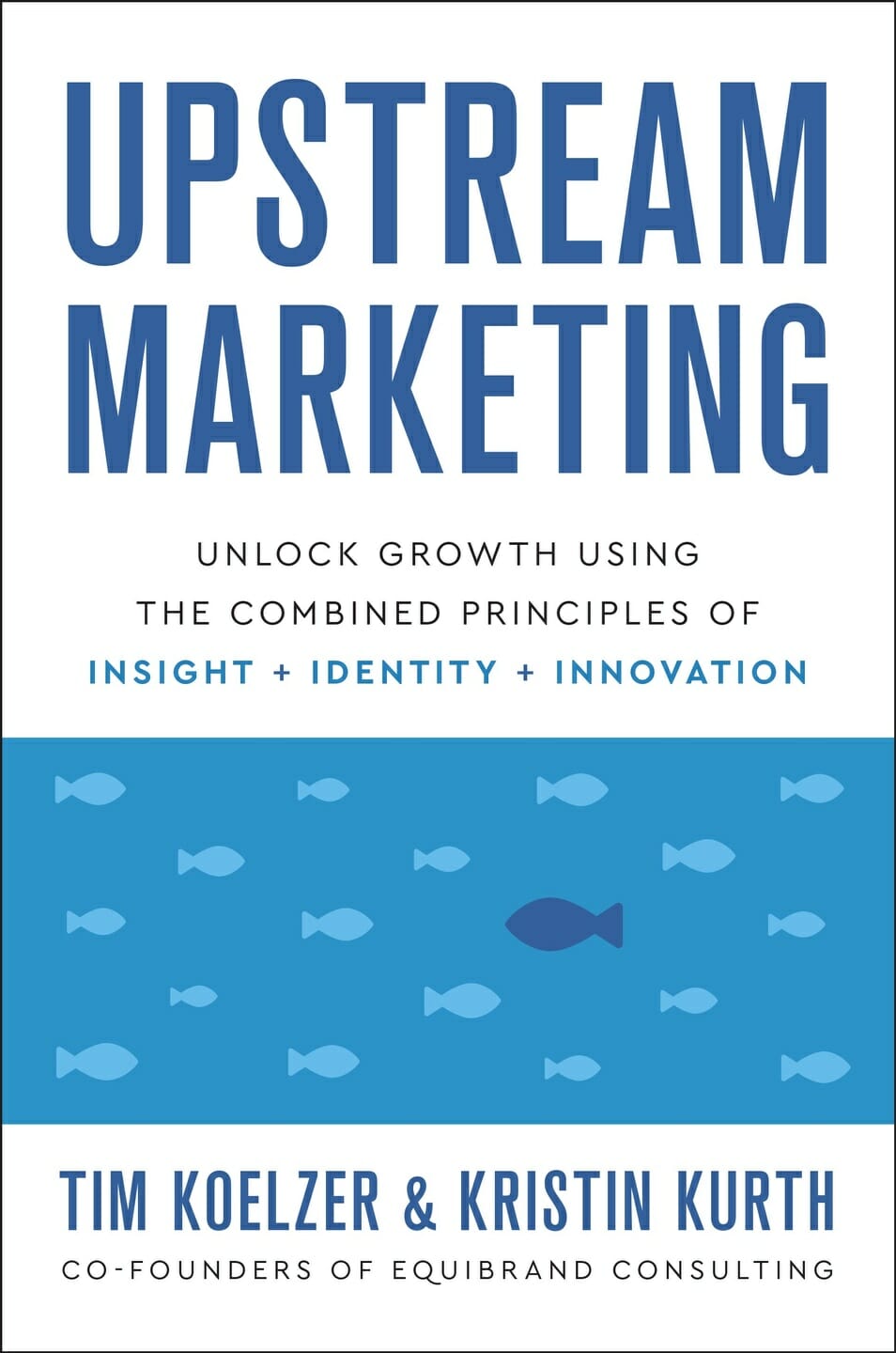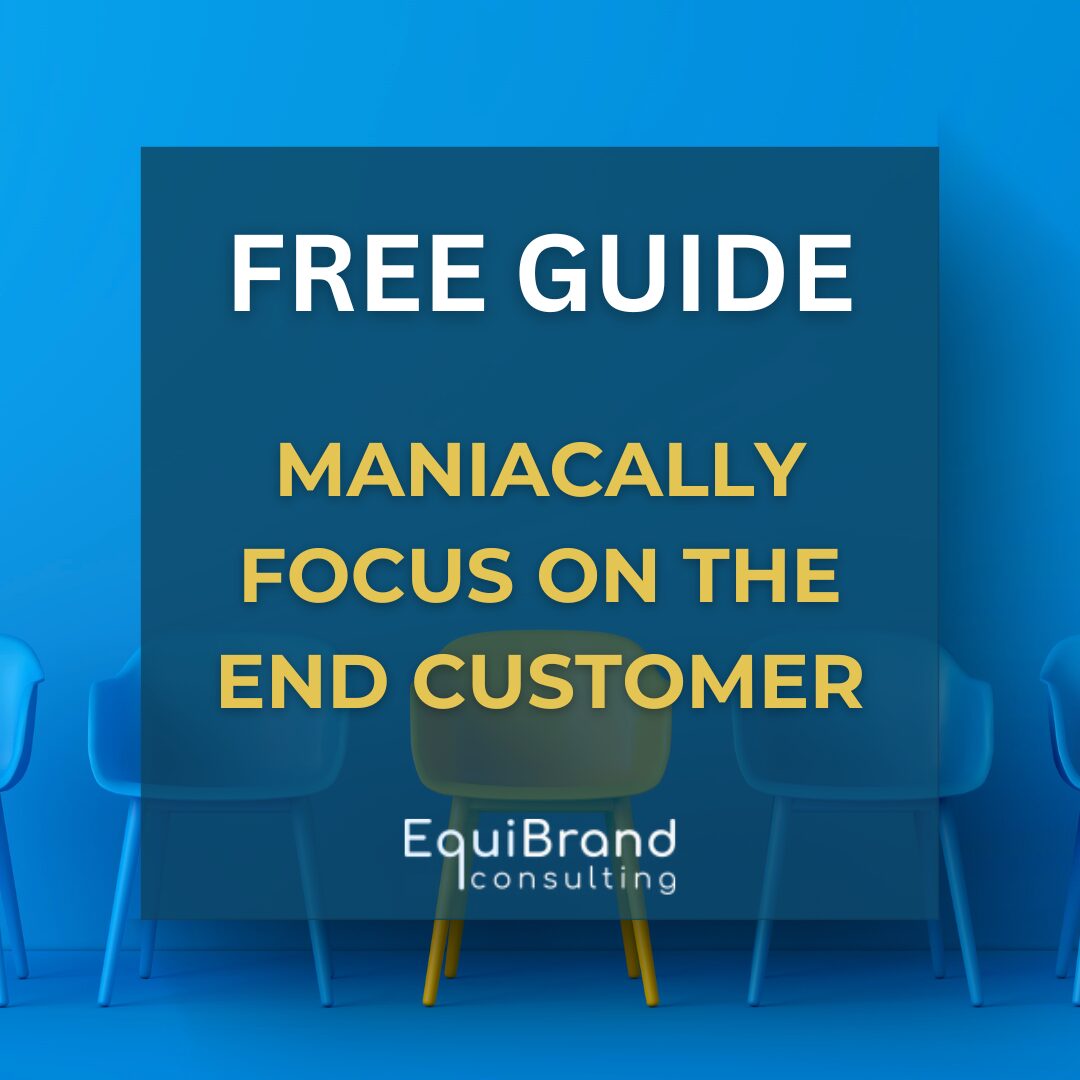
What is Upstream Marketing?
Winning marketers relentlessly focus on expanding their playing field using upstream marketing to identify and fulfill unmet customer needs. Creating and capturing new market spaces and building strong brands is the domain of upstream marketing and the focus of our work and best-selling book. Here we’ll explore the differences between upstream vs. downstream marketing.
For More Insights on Market Exploration and Upstream Marketing:
Download Our Free Comprehensive Guides:
Understanding Upstream Marketing
The concept of upstream marketing is about identifying and fulfilling customer needs before your competitors. It involves strategic activities that happen at the very beginning of the product and brand development cycle. By developing a clear market segmentation map, identifying target customer segments, and understanding how customers use the product or service, companies can create strong brands and gain a competitive advantage early on.
Upstream Vs Downstream Marketing?
Downstream Marketing:
This is what most people visualize as marketing and involves activities such as advertising, promotion, brand building, and communication with customers through public relations, trade shows, and in-store displays. While these activities are important for enhancing the acceptance of an existing product or service, they are often expensive and come into play too late in the product-brand lifecycle.
Upstream Marketing:
By contrast, early-stage marketing is about the strategic process of identifying and fulfilling customer needs at a much earlier stage. It focuses on market segmentation, customer behavior analysis, and developing competitive strategies long before the product or service hits the market. This proactive approach is crucial for generating new revenue growth and achieving long-term business and brand success.
In considering strategic vs. tactical marketing, it’s crucial to ensure both are fully aligned and seamlessly integrated. After all, upstream and downstream marketing are different parts of the same stream.
An Upstream Analogy
Think of upstream marketing as everything that happens before the hook is in the water when fishing. Expert anglers will consider and act on several factors before casting the line, allowing them to catch more fish. They decide what type of fish to target, the best fishing methods, and the appropriate tools. They also consider where to fish, the best times, and the most effective bait. This analogy illustrates the critical, early-stage principles of planning, strategizing, and making key decisions to win the customer.
Why Go Upstream?
- Strategic Focus: Companies that rapidly identify and reallocate resources to new growth opportunities outperform those with a steady-state approach. Upstream marketing opens up new market spaces, making competition irrelevant and significantly expanding the business landscape.
- Customer Obsession: Investing in deep, proprietary insights into customer needs allows companies to better meet those needs now and in the future. This customer-focused approach helps ensure long-term business success.
- Long-Term Growth: Amazon’s Jeff Bezos emphasized the importance of long-term thinking. Companies willing to invest in a seven-year horizon face less competition and can achieve greater success.
Innovation and Flexibility: Upstream marketing thrives on being “roughly right” rather than “precisely wrong.” It encourages experimentation, testing, and learning, which are essential for innovation. - Efficiency and Agility: New tools and techniques, such as agile planning, rapid prototyping, and 3-D printing, make upstream marketing more efficient and cost-effective. Companies can quickly adapt and iterate based on market feedback.
- Market Acceptance: Consumers today are more accepting of beta products and iterative updates. This allows companies to launch early versions and improve them over time, gaining early loyal customers.
- Strategic Execution: Upstream marketing integrates strategy formulation with execution, ensuring that marketing strategies are built into the product development process from the start.
Upstream Marketing Challenges
- Complexity: Upstream marketing involves a set of principles and practices that need to be consistently applied. Many companies struggle to get started or treat upstream components as separate rather than an integrated system.
- Time Investment: Upstream marketing requires thoughtful strategizing, planning, and testing. The benefits are not immediate, which can be challenging for companies facing short-term pressures.
- Intangibility: Unlike downstream efforts, the value of upstream marketing can be harder to envision and measure. However, the long-term benefits often outweigh the initial uncertainty.
Upstream Opportunities
There are reasons why early-stage marketing makes sense, and why now. The primary benefit is the substantial business growth that results. New markets, new business models, new products, new channels, and other growth areas open up entirely new revenue streams.
Here are other factors:
- Strategic Focus: The answers to most marketing strategy questions reside in the marketplace. Companies that invest in deep, proprietary insight into their customers are better equipped and inspired to meet their needs today and in the future.
- New Revenue Streams: Upstream marketing can uncover new markets, business models, products, and channels, leading to substantial business growth.
- Strategic Integration: Combining strategic formulation with execution ensures that upstream marketing naturally flows into downstream implementation, creating a seamless marketing strategy.
For more insights on market exploration, explore our free resources below. Don’t forget to sign up for our Equibrand Briefs to stay updated with the latest news and insights from us.





























Follow EquiBrand